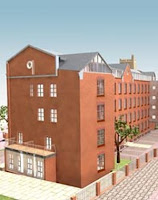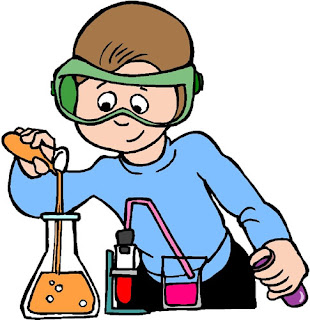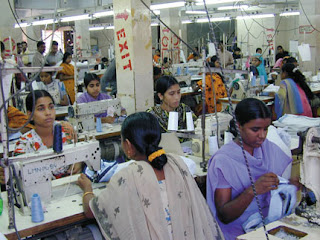Textile
What Are Textiles? Textiles Definitions & General Terms
What is Textile might be a simple question for the Textiles expert like me; but it might be little bit common but unknown to the general public’s like you. To be frank, textiles is a department which concludes lots of subcategories and by accumulating all of the textiles terms and products it results the all in one “Textile” or “Textiles”.
Traditionally we think Textiles as cloth that we wear. But to be specific, textiles mean a woven. A product that is woven by the warp yarn and weft yarn; no matter it is to be interlaced each other or not. Other related terms like textile fibers, fabrics, yarn, sliver, machines, knitting, dyeing, printing, designs, art, engineering, cotton, coir, bamboo, tex, raw materials, synthetics, nano textiles etc are in the broad Textiles Category. Some other broad but extremely related of terms that are in Textiles category which is like Garment or Apparels, Yarn Manufacturing, Fabric Manufacturing or Weaving, Dyeing or Printing (Traditional Dyeing or Digital Printing), Finishing or Final engineering works on Textiles to make it more appealing to the consumers and buyers and then Textiles product exporting.There are three ways about how a textile is made:-
Weaving: In this method; two yarns is used to interlace each other and this is how the fabrics are made. By combining two earn from the row to Colum axis makes a continuous fabric which is later be processed as per customer needs and requirements. It is worth mentioning that the Warp yarn is basically stronger than the Weft yarn because Warp yarn would have to face the hard beats of the reeds.
Knitting: Knitting needles are used to make such type of fabric. One needle is continuously providing the adequate yarns to another yarn for making an interlacement. Some machines named circular Knitting Machines; Compound Knitting Machine, Flat Knitting machines are used to make such type of fabric. Textiles called Upholstery are basically a Textile Knitting Technology and many of such textiles are made by the hand and needles. You better check out some knitting videos here.
Felted Fabric: This is probably the most advanced Technology for the Textiles World. In this technology, textiles are made by felting or pressurizing two yarns or cloths each other without having any interlacements. No needles or shuttles or reeds are used to make the Felted Cloth. Basically these types of Textiles are used as Heavy textiles and sometimes used as a jacket or overcoat etc.
This is all about the Textiles. If someone ask you about “What is Textiles?” then you may reply the exact thing which I just told you above along with some textile related definitions and terms.
List of American Textile Company, Mills & Organization [Part 01]
Peoples seem that Textile Industry and Companies just for the Asian & Asian Subcontinents. But it’s false. There are lots of Eco-friendly, well-known Textile Company, Mills and Industries are doing their business with good reputation in United States of America.
The American Textile Mills and Company has been established on the base of large demand of different Textile materials like Woven Fabric, Knitted Fabrics, Dyed Woven Fabric, Yarn Dyed Fabric, Different Textile fibers like Metallic, Polyester, Cotton, Ramie, Flax Linen, Rayon Silk, Silk, Jute, Silicon coated fabrics, mattress, Pillows, Blankets, Sweaters, Underwear’s, Bra, panties, Jackets, Knitted fibers, polyester, cotton, rayon, various apparels, spandex, acrylic, nylon, knitted high pile, jersey, napped fleece, terry cloth and non-woven fabrics for fashion, performance, industrial and different safely applications.There is a list of Different Textile Companies of United States of America which has been accumulated from various sources of Net.
1. Weave Corporation, USA
2. Van Lathem, Inc, USA
3. Triumph Geo- Synthetics, Inc, USA
4. The fabric Stock Exchange, USA
5. Textile Innovators Corp, USA
6. Textile Development Associates, USA
7. Taconic, USA
8. Sunsilks,Inc. USA
9. Sun Action Textiles, USA
10. Straus Knitting Mills, Inc, USA
11. Stratford Hall Textiles, USA
12. Somerset Fabrics, LLC, USA
13. Silberman Associates, USA
14. Satesa Corporation, USA
15. Safco Fabrics, USA
16. AST A. Sommer Textiles, USA
17. American Folk & Fabric, Inc., USA
18. American Ribbon Manufacturers, USA
19. American Spandex, Inc., USA
20. American Textile, USA
21. Angel Textiles, Inc., USA
22. Apparel Label, USA
23. Arc-Com Fabrics Inc., USA
24. Asheboro Elastics Corp., USA
25. Ashro Fabrics, USA
26. BNB International Textiles, Inc., USA
27. Bo-Tex Sales, USA
28. Bostik, USA
29. Brecon Knitting Mill, USA
30. Bruck Braid Company?, USA
31. CDS Company, USA
32. Carnegie, US
33. Celia Incorporated, USA
34. Central Shippee, Inc., USA
35. Crazy as a Loom Weaving Studio, USA
36. Custom Laminations, USA
37. David Rothschild Company, Inc., USA
38. Dazian, USA
39. Donaldson Filtration Solutions, USA
40. Fifield Inc., USA
41. Fisher Textiles, United States
42. Gemex, Corp. , USA
43. Gibson-Tex, Inc., USA
44. Gift Fabric, Inc, USA
45. Guilford Performance Textiles, USA
All of the Textile Mills and Company names mentioned above produces either Textile Products or provide related materials to produce textile product.
List of American Textile Company [Part 02]
In the previous post I gave you a list of American Textile Mills and Organization. Today I will give you another list where the best American Texile Industry has been enlisted too.
1. Habu Textiles, USA2. Hemp Textiles International Corp., US
3. Hempworks Inc., USA
4. Hickory Yarns, Inc., USA
5. Home-Tex Fashions, Inc., USA
6. Homespun 10 Foot Wide Fabrics & Draperies, USA
7. Houles, USA
8. Huesker, United States
9. J & J Commercial Carpets, USA
10.Jab Textiles, Inc., USA
11.Keystone Weaving Mills, USA
12.Kravat Fabrics, Inc., USA
13.Lancer Textiles, Inc., USA
14.Lantal Textiles, Inc., USA
15.Marcel Banziger Inc., USA
16.Noah Lamport, Inc., USA
17.Origin Inc., United States
18.Outlast Technologies, USA
19.Pacesetter Fabrics, LLC, USA
20.Peachtree Fabrics, Inc., USA
21.Penumbra Textile, USA
22.Performance Textiles, Inc.,US
23.Philips-Boyne Corporation, USA
24.Plumridge, Inc., USA
25.Polartec, Inc., USA
26.Quest CAD/CAM, USA
27.Reagan Textiles, Inc., USA
28.Regal Fabrics Inc., USA
29.Rockville Fabrics, USA
30.Safco Fabrics, USA
In the next post I will give you more American Textile Company names.
History of Textile | Stepwise Description of Textiles History
Before giving a description on textiles history we should first know what is textiles?
Well, Textiles is a technique by which a fabric is made by using the warp and weft yarn. Textiles are not only produced by weaving it, but also it is made by knitting or felting the fibers and yarns. Textile is basically a Latin word which came from “Texere” and it means “To Weave”.In order to brief the history of textiles we have to go back when the civilization was initiated. When the people started to think that we shouldn’t stay nude. We should cover our secret bodies by using something. From that time the textiles history began. Day by day, peoples tried to make something comfortable. Imagine, at the initial time of human civilization, peoples worn husk and leaves of trees to cover their under body. But later they tried to invent something different that is more easy to use and more stable.

In this way, the days were continued and the peoples were trying their best to excavate something regarding to textiles. After having lots of attempts, just before the 7th Century of BC (Before Christ) people were succeed to discover the fiber. It was the turning point of textiles history. Research said that, peoples successfully made a cloth to wear just before 500000 years ago.
At the beginning time of textiles history, the Needle was made by using the wood and various natural hard sticks. But later, just before the 40000 years ago the sewing needle has been started to make which was quite good for sewing cloth.
In China the textiles was firstly spread and later it expanded in Indian Subcontinent and Africa. Research said, wool and silk fiber was firstly invented before the cotton fiber. And all of the fibers were available on the Indian Subcontinent and the Arabian merchant’s trades with these cloths and they exported these to various European country.
In the hand of Silk fibers and silk cloth revolutions a Silk Road was created for the first time of the history of textile. This road was a trade road where the merchants from the China, Egypt, Indian Subcontinent, Arab, Persia and Rome were interconnected with their Textile Business issues.
Then, the people started to do something with the textiles. They started to use it according to its versatile using capabilities. It is worth mentioning that peoples started to make their own cloths with their own design and a classical era of textiles was started.
Then, slowly the cloths and fabrics are being developed. A lot of new fibers like Glass, Bamboo and other man made fiber were produced. And by using these fibers some exclusive fabrics are being developed which has taken our world to a new fashionable world which is really significant and gorgeous.
It’s all about the History of Textiles and textiles history is still going. After 100 years, today’s textile will be a history……so history is on-going process. If I live after 100 years (Inshallah), I will definitely update this page.
To Install a New Textile Industry What Steps Should We Take?
Installing new Textile industry is the big challenges for the Textile Entrepreneurs. Sometimes the owner of the textile industry has to fall in miserable lose due to unplanned and well-configured installation. A new textile should have not only employment, salary, exclusive profit strategy but also have some geo-friendly process. This will assist the new Textile in the long run. Let us briefly discuss the things that should keep on mind while installing a new textile industry-
Product Planning:
Firstly the industry owner has to have a proper plan that what kind of product will be produced in his new textile. For instance, if you want to have a woven factory you will have to take a different plan than the man who wants to install a new textile industry for the knit fabrics or garments. There will also have different plan for the knit composite mill also.
Place & Factory Appearance:
It is crucial to choose the factory place. At the time of choosing it the new textile industry planner should think about the communication facilities or problems. It will not be so much profitable if the textile mill is so far away from the Capital or Head Office. And the appearance will be more comfortable to the workers and employee so that, they can feel comfort while working. An ETP (Effluent Transfer Plant) enabled and having good appearance of a new textile can motivate intensely an employee to do better performance. It is geo-friendly too; which will not only enhance the image of your new textile but also be attractive to the buyers. Mind it, buyers likes the textile mills which are ETP installed and conscious about the environment.
Recruiting Best Employees For New Textile:
For a new textile it is mandatory to elect the best possible experienced employees through the interview process. Establishing a new textile industry is a great challenge at initial stage. To go one step ahead in this case, there is no alternative to hire the experienced workers and employees. After establishing, the fresher employee or worker can be employed. Because the fresher may have some innovative idea or tendency to do different something, that is very important for a new or established textile to be exceptional than others.
Purchasing Accessories and Related Tools:
There are numerous reliable textile traders in all over the world who supplies all of the textile accessories, machinery and everything whatever you needs. So as a new textile industry planner you can contact them. Before purchasing something, check the market price in different selling agency and than take the final decision. It will save you lots of money.
Buyer Managing or Marketing:
After completing the entire preliminary but mandatory the above mentioned works it is the time to be commercial. Manage Buyers to sell your product. To do this, marketing is essential. Take the help of the marketing related personnel.
Social Works:
Do some social works like help the poorer population, flood affected peoples, and sponsor any team who are working for the country by the name of your industry. It will assist your new textile to be well-reputed within very shorter.
The facts I have mentioned above is the basic thing to build a new textile. There are lots of steps left to mention. I will elaborate it later. If anyone found this article useful, I will be grateful to you as thinking, I have been able to serve you something.























